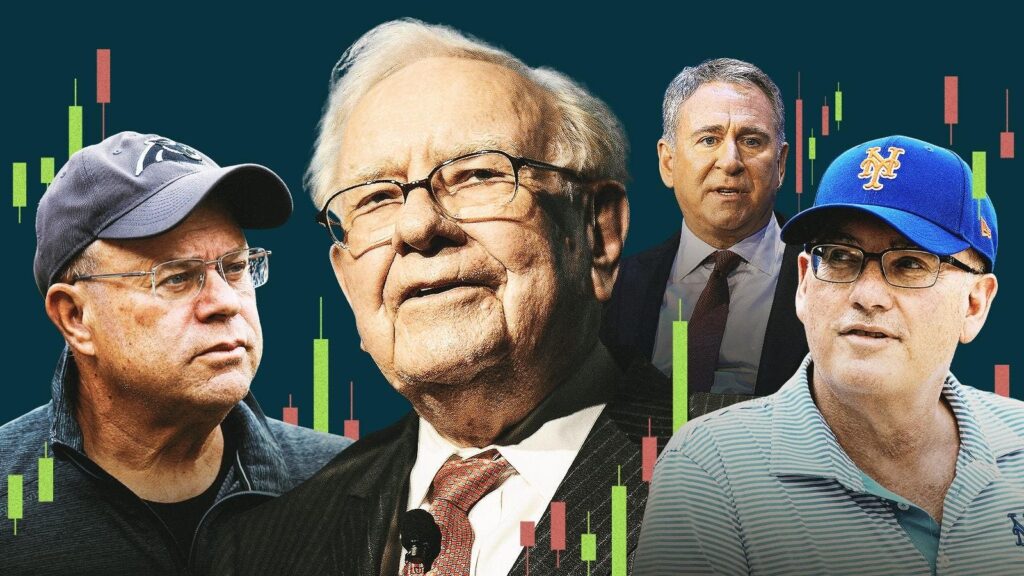In recent months, significant movements among billionaire investors have garnered considerable attention, revealing critical insights into market strategies and trends. Notable among these is Warren Buffett’s foray into Domino’s Pizza, marking a $600 million investment, while other prominent investors, such as Ken Griffin, David Tepper, and Steve Cohen, have taken contrasting approaches by selling shares in major companies like Amazon. This analysis of SEC filings not only underscores the investment choices of the wealthiest individuals but also offers a lens through which smaller investors can glean invaluable data regarding market behavior and stock valuation.
The approach taken within the Forbes Billionaire Investor model portfolios over the past 30 months has been multifaceted, leveraging insights from the investment strategies of billionaire investors while also focusing on other significant factors. A key focus has been on identifying stocks that present strong business fundamentals, including low debt levels and consistent revenue growth, to capitalize on those trading at depressed valuations. Furthermore, the emphasis has been on selecting dividend-paying stocks and tracking insider buying activity, which typically indicates positive company outlook and managerial confidence. This strategy has already yielded substantial returns within various sectors, indicating the effectiveness of blending both billionaire insights and sound investment principles.
The SEC mandates that investment managers overseeing at least $100 million in assets disclose their holdings quarterly, providing a regular and structured avenue for investors to assess market trends. While there is a notable delay in reporting — often arriving 45 days post-quarter end — this information still offers a useful perspective for investors aiming to uncover insider trends and ownership shifts within the market. Notably, the propensity for longer holding durations among value-oriented investors like Buffett diverges from the often rapid trading strategies employed by quantitative traders such as Ken Griffin. This distinction offers valuable insight into the differing investment philosophies at play among billionaires, influencing retail investors’ decisions.
Examining Buffett’s recent portfolio activity reveals a deliberate shift in holdings. The acquisition of Heico, alongside continued investment in established companies like Occidental Petroleum and Domino’s, signals a calculated approach toward diversifying within industries that demonstrate resilience and growth potential. Conversely, his significant reductions in holdings of Apple and Bank of America, despite their status as major parts of his portfolio, suggest a reevaluated outlook on these companies’ future performance amid changing market conditions. Similarly, the investment strategies of other billionaire investors, such as Jeffrey Yass and Ken Griffin, showcase varied approaches focused on technology and healthcare sectors, reflecting a larger trend of caution amidst fluctuating market dynamics.
The SEC disclosures also reveal considerable movements from both Steven Cohen and David Tepper. Cohen’s Point72 hedge fund has shown interest in growth areas like Taiwan Semiconductor and Comcast while divesting from major players like Amazon and AT&T. This strategy echoes a broader sentiment of selective investment where established companies are scrutinized against emerging market trends. Tepper’s notable purchases include PDD Holdings and other Chinese companies, indicating a readiness to explore international markets, even amid skepticism toward China’s economic landscape. His decision to sell positions in stocks like Nvidia and Microsoft aligns with a recognized need to capitalize on gains before potential downturns.
In summary, the actions of billionaires like Warren Buffett, Ken Griffin, David Tepper, and Steven Cohen signal broader market themes as they navigate an evolving economic environment. While their individual strategies reflect diverse approaches and priorities, common threads around caution and selectivity emerge, providing a framework for smaller investors. As the market continues to evolve, close scrutiny of billionaire investors’ moves—paired with sound stock Evaluation metrics—remains a key strategy for successful investment navigation. Understanding both the “why” behind these adjustments and the sectors targeted can empower individual investors to make informed decisions as they engage in their market pursuits.

